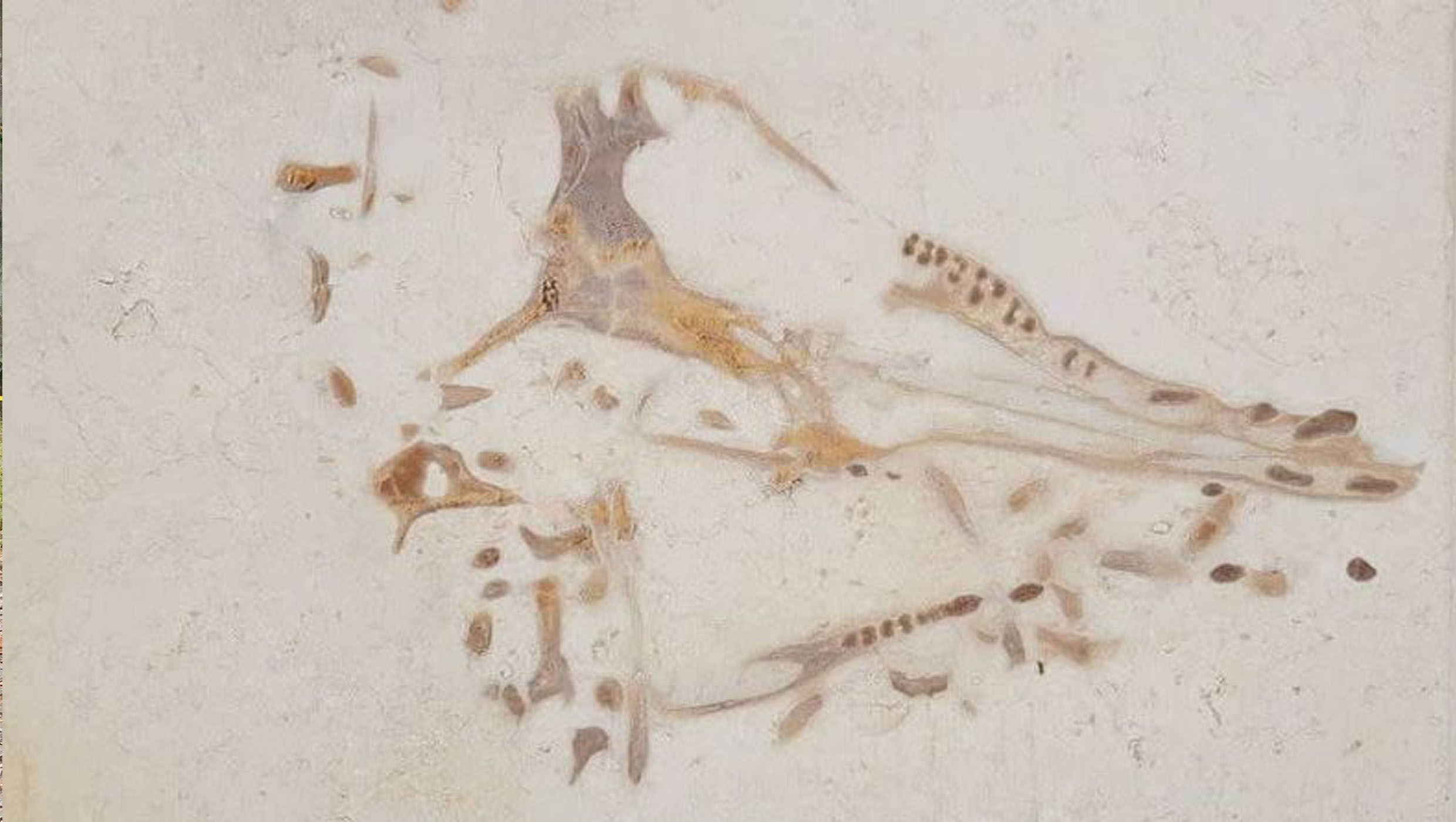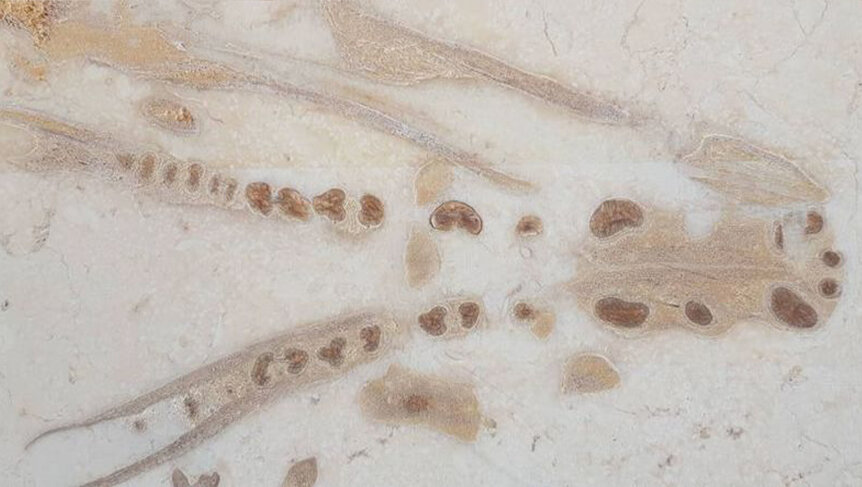Create a free profile to get unlimited access to exclusive videos, sweepstakes, and more!
This guy found a 40-million-year-old extinct whale in limestone you’d use for your kitchen

What if you were shopping for kitchen tiles and suddenly found yourself staring into the empty eye sockets of a prehistoric whale’s skull?
Paleontologist Abdullah Gohar encountered exactly that after he got a call about a strange fossil accidentally unearthed in limestone that was being cut into slabs for building a kitchen. The caller, Mohamed Barakat, owns a stonecutting workshop just outside of Cairo, Egypt, and had no idea what the fossil was, but sent Gohar photos of those panels to identify it. What those images revealed was unlike anything he had ever seen.
“When I looked at the specimen, I was shocked by how gorgeous and well-preserved it was,” Gohar told Gizmodo. “It appeared that the bones belonged to an Archaeoceti, a group of the predecessors of modern whales and dolphins.”
Archaeocetes are the most ancient group of cetaceans — marine mammals that include dolphins and whales—that went extinct about 34 million years ago. Like many other life-forms that made the transition from land to sea, they started out crawling on land and evolved into amphibious and eventually aquatic creatures.
Gohar found the whale to belong to the Protocetidae family of archaeocetes. Protocetidae swam through the seas of North America, Europe, Africa, Pakistan and India during the middle Eocene period (about 40 million years ago).
Thought to have gravitated towards warmer waters near the tropics, Protocetidae typically had huge eyes and long snouts. Archaeocetes in general still had varying types of teeth closer to those of land mammals than whales that exist today, which either have teeth that are the same throughout the mouth or none at all. They were at a point in evolution that they still had powerful legs that could support them on land and in water. Their long snouts had something else in common with land mammals. These proto-whales had nostrils, not the blowhole that future species ended up evolving.
“Protocetidae…represent a unique step in cetacean evolution and are the predecessors of modern whales and dolphins,” Gohar said, though none of those known could beat out the blue whale.
The species of the fossil remains unknown and is possibly new. Gohar’s observations revealed the “Barakat whale,” nicknamed the “kitchen whale,” to have been one of the larger amphibious whales at some 16 feet long and nearly 2,000 pounds. Further study will involve creating a 3D model of the fossil trapped in the limestone panels and putting its DNA under a microscope to see exactly where it belongs in the timeline of whale evolution.
Someone almost bought those limestone panels before Barakat called Gohar about the unusual find. If Barakat hadn’t handed them over for study, that buyer’s kitchen would have been a legit museum.
(via Gizmodo)















